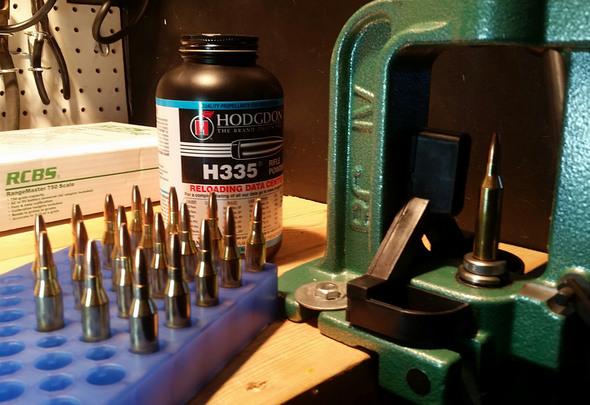With the growing interest in prepping and survival skills, there is one skill that people neglect –- reloading ammunition. A lot of the time, preppers end up buying firearms and ammunition and forget to focus on putting time and money into learning how to use and reload their gun properly, or what metallic reloading is all about.
*This post may contain affiliate links. As an Amazon Associate we earn from qualifying purchases.
So, What Is Metallic Reloading?
By definition, this is the re-manufacturing of a metallic cartridge to its former complete state. In more simple terms, metallic reloading is recycling an already fired cartridge.
It involves using specialized tools and techniques to carefully and safely reassemble the four major components of a cartridge -– the primer, brass case, bullet, and powder charge.
Why Should You Reload?
There are many reasons to reload your metallic cartridge and some more common than others.
Often, many gun aficionados reload their ammunition to save money. Reloading your ammunition will cost you less than half the amount you’ll spend on factory loaded ammunition. And, some types of ammunition are not only expensive, but they are also scarce.
Other shooters reload mainly because they want to fine tune their specific gun loads. Fine tuning helps to achieve the very best accuracy, weight, and fit that may not be available in a factory load. That is also a great hobby to try out!
For some shooters, reloading allows them to create special purpose loads. For instance, heavy practice loads are created from reloading and used for exceptionally strong firearms which are not mass-produced in factories.
And there are those shooters who live in areas where ammunitions are not easily available. For instance, some states have very strict gun laws. That makes reloading a convenient and cheaper choice.
Steps to Reloading a Metallic Cartridge
In most ammunition, a metallic cartridge features several expandable and reusable components. However, the only directly reusable component is the brass case. Incidentally, it is also the most expensive piece.
Here are the steps involved in reloading a handgun and rifle ammunition.

Step 1: Clean the brass
Cleaning the brass case will reduce the risk of having your reloading work gunked up. Clean ammunition also feeds more reliably into your gun.
Step 2: Deprime the brass
The primer is expandable, and once you use it, it’s no good anymore. You can use a decapping die or resizing die to punch out the old primer from the brass casing.
The resizing die is also used to push the brass back into the correct exterior dimensions. That ensures that the reloaded ammunition perfectly fits into the gun’s chamber.
Step 3: Prime the cartridge
From this step on, you’ll basically be rebuilding the metallic cartridge.
For priming, you can use an auto-priming press or a handheld priming tool. Both are efficient for the job, however, the one you choose will depend on the amount of reloading you need to do and, of course, your budget.
With each step of reloading ammunition, ensure that the primer is correctly seated before continuing the process.
Step 4: Add powder
Adding powder is probably the toughest step when reloading the cartridge. It is absolutely essential to load your cartridge with the correct amount and type of powder.
Whenever possible, try to reference from a reputable published source. Sometimes, the manufacturers advise on the appropriate powder measurements to use.
Use a powder measure to scoop the powder, double check the measurements, and add it to the cartridge. Even a little extra powder can potentially have harmful repercussions. That, however, shouldn’t scare you from the reloading process, it should only heighten your awareness to detail.
Step 5: Seat the bullet
Next, seat the bullet to the actual projectile. The best way to go about this is using a seating die and a press handle. The manual should tell you the correct measurements for the seating. Again, when a cartridge is shorter or longer even by a half an inch, there can be some serious consequences.
Step 6: Crimp the cartridge
You in the home stretch! Just one more thing — crimping the cartridge. However, this is only for ammunition used in tubular magazines or for a firearm with brutal action, such as full-automatic and semi-automatic guns.
There are two types of crimps -– roll and taper. Roll crimps are for single-shot firearms or revolvers that headspace off the case rim. Taper crimps are for semi-automatic firearms that headspace off the case mouth.
The First Rule of Metallic Reloading Is Staying Safe!
Whenever you are reloading your ammunition, you should exercise extreme caution. Always follow the reloading manuals from the specific manufacturer of your firearm -– different guns have different cartridges. Moreover, source your reloading supplies and references from credible reloading equipment vendors like MEC Reloader and Hornady Reloading. Stay safe!